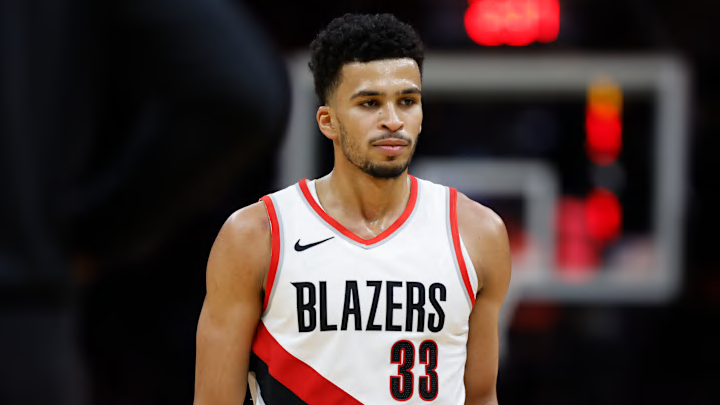Toumani Camara’s two-way play
The final play of regulation against the Utah Jazz on Dec. 2 epitomizes the energy Camara has injected into the Blazers’ starting unit. With the game tied at 106, Colin Sexton drove right on Camara for a game-winning layup attempt. Camara swiveled his hips, stayed with Sexton stride-for-stride, and stamped his layoff attempt off the backboard, sending the game to overtime.
It’s not often that rookies find a role as an impact defender, but that’s exactly what the four-year Dayton product has done. Since earning a spot in the starting lineup, he has consistently received the most difficult defensive assignment and displayed the ability to switch one through five.
Balance, quick hips and strength enable him to stay with almost any ball handler. Even if he loses a step, a quick vertical and impressive instincts make recovery blocks easy. He has demonstrated proficiency as a team defender, executing hard closeouts to prevent breakdowns.
Although most of his impact has come on the defensive end, Camara has been no slouch offensively, either. He’s shooting just 28 percent from three, but the repeatability of his smooth stroke bodes well for his development as a shooter.
His long strides allow him to attack closeouts effectively. At the rim, he’s shown a preference for finishing with his right hand, which is his off hand, and should improve as a finisher when his shot becomes a more credible threat.
Camara has anchored the Blazers’ ascendant defense, but what’s more important than his immediate impact is how he fits within the team’s long-term timeline. Players like Camara—whose on-ball stickiness, length and defensive acumen provide the tissue for an effective, switchable defense—are important building blocks for any aspiring contender.
If he hones the “three” part of the three-and-D archetype, Camara figures to become part of the Blazers’ long-term core alongside Anfernee Simons, Sharpe and Henderson.
